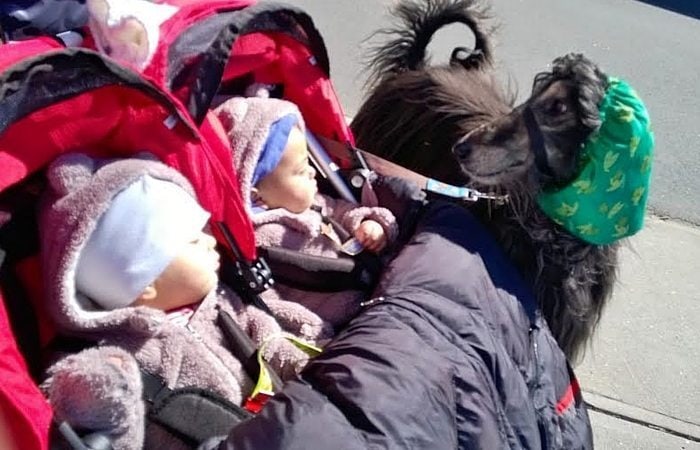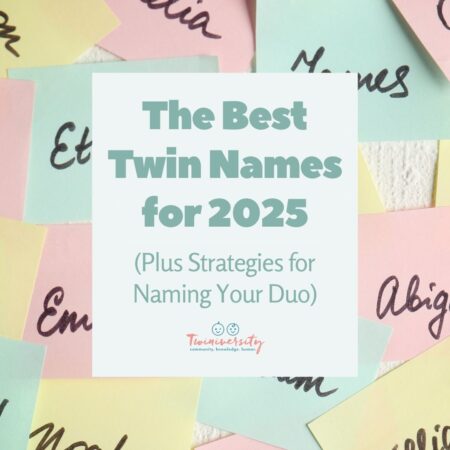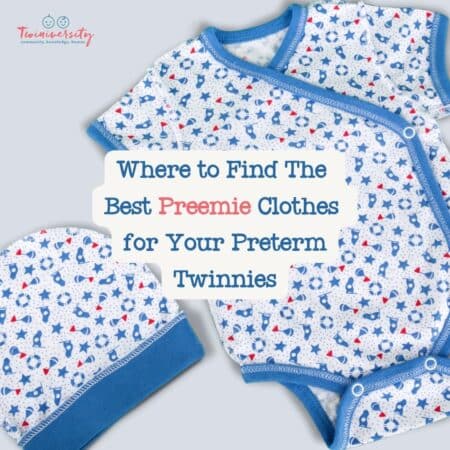Last updated on May 20th, 2024 at 01:31 pm
I have always been a dog mom (#dogmom, #dogsarefamily, #lovemelovemydogs, sticker on the car, tshirts with dogs, etc.). Yes, that kind of dog mom. I have raised, showed, bred, and loved on various Afghan Hounds for 18 plus years now. One of my hounds even competed in agility and obedience. It was going to be me, my dogs, and our love forever and ever. Then when I met my husband, something clicked and along came not one but two precious miracles. Happily ever after, right?! Well, I received many a raised eyebrow and comment… ‘the dogs will be jealous’, ‘are you crazy’, ‘you can’t leave them alone together or they will eat your babies’, ‘your dogs will become just dogs’, and so on. I mean life HAS changed, but not in ways one would expect. Here is how I transitioned from #dogmom to #twinmom.
It wasn’t easy on either of us. As I grew larger and larger, the dog walks became shorter and shorter to non-existent. The dogs and I shared some weekend afternoons in bed snoozing, they licked up the midnight snack crumbs, and basically sympathized alongside. Then as the baby things accumulated and dog things moved around, they knew something was up. Until I was gone for two weeks. When I returned they were overjoyed and I was back in snooze mode (while the babies were in the NICU). But there were strange smelling blankets to rub against and get hairs on-yay…. WAIT! This had new human smell… (suspicious). Now my husband, being from Central America where dogs are usually outside or feral, was paralyzed by the thought of a four pound preemie being in the same room as a 60 pound hunting dog (aka ferocious filthy hairy shoeless beasts). Sigh.
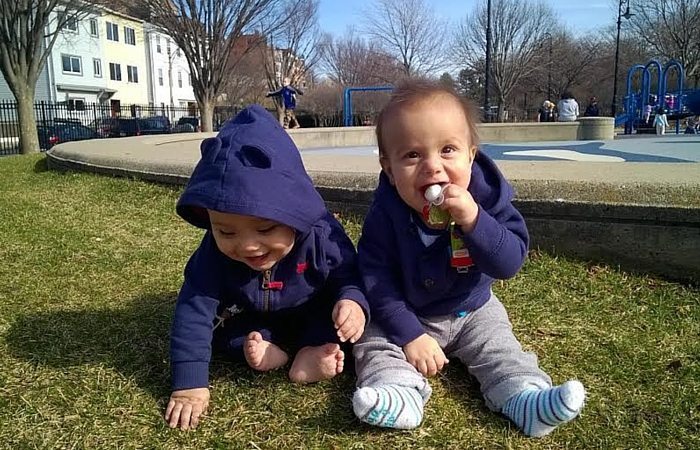
There are benefits to having a doggie abode. Infants who grow up with dogs are less likely to have allergies, asthma, colds, ear infections, be antisocial, and the list goes on. Multiple studies over the past 10 years demonstrate that children are healthier when growing up alongside their canine siblings when compared to dog-less homes. It is postulated that the exposure to common foreign proteins and bacteria early in life challenges the immune system so that it doesn’t overreact to common allergens, saving the major reactions for life threatening illnesses. Moral to the story? Keep the dog inside and let the children get dirty outside. The ‘an apple a day’ approach.
So here are 5 things to consider and do to prepare your furry ball of love for your babies’ homecoming!
1. Things You Can Do If You Don’t Have A Long NICU buffer
Use the prenatal time before you get uncomfortable to practice! As I grew larger and larger, the dog walks became shorter and shorter to non-existent. Ideas for pre-exposure include carry dolls/whatever around in a swaddle or wrap (bonus if you use a friend’s baby), pushing an empty stroller while you walk the dog (use it for support or to carry groceries!), start using the baby lotion as your body cream and let the doggie smell. Change the exercise routines to match the 24 hour schedule of a newborn (when you get up to pee 5 times during the night, let dog out once). If you have been lucky enough to receive formulas samples mix a bit and let doggie smell it. Stock up on dog cookies and put them by the crib, the rocking chair, the front door, basically everywhere you need to provide positive reinforcement. Set up/check baby/dog gates.

2. Think Like A Dog
Dogs are highly socialized pack animals. They do not know jealousy; however they need time to adapt to change. In the pack and order of dogdome, the strong are leaders, the weak left behind, and the pups defended at all costs. Everything is learned, survival built on primal instinct. We cannot expect dogs to act or think like humans, because well, they are not humans. Therefore we must think like a dog! Dogs’ sense of smell is over 1,000 times more sensitive, they have over 20 times more scent glands and so yeah, dogs are highly driven by smell. They need to be around a person’s smell for a while before it is accepted as part of the pack. Ask the nurse for a used hospital crib sheet or baby hat to bring home and leave with your dog. My NICU was more than accommodating with this request! Return it to their soiled laundry and bring home the next one, fresh with baby smell (bonus if peed on because dogs love that!). The dog may sniff and roll on it, attempting to get the smell on them as their oil glands on their neck release scent on the blanket. This is a belonging sort of process.
Dogs have a highly developed sense of hearing and can hear about 4 times farther and at higher pitches than the normal hearing of a human. It can be helpful to play clips of babies crying during your pregnancy, so the dog (and you) can be desensitized. Even though dog vision is different, viewing things much better in motion because as canines are hunters by nature. This is something to remember as you bring home your squirmy ball of baby flesh, whose cry resembles lost prey. Cribs/bouncies, etc. should be off the ground and/or protected/blocked off from doggie mouths in the first 3 months. Never leave a dog alone with a baby during this time of assimilation. However do include your dog alongside for diaper changes, feedings, walks, etc. so they get to be around the little one! Allow the dog to sniff the baby diapers, empty bottles/pump supplies, or a baby head using positive rewards. As the babies grow and can see the dogs, position the dog behind a baby gate but near the baby in a high chair/bouncy seat so they can see each other. Attend to both normally ie. fill the dog bowl, give cookies while feeding baby describing the dog to the baby and saying ‘good doggie’. Always give the dog a treat when you feed the babies, this tells the dog that there is enough food for everyone. Heck, give yourself a treat too!
3. Enlist Doggie Activity, People and Schedules
My mom showed on the scene to help with babies of course, but also with dog activities and poop scooping during the first few weeks. The dogs saw this as awesomeness. I saw this as sweet essential relief. With twin infants and dogs, it was every beast for himself, wartime survival at its best! It is good to keep the dogs exercised and attended to so they are not a hindrance, get up to mischievousness (peeing on the diaper pail), and do not see baby as a threat to the hierarchy. When friends ask to help, ask them to bring over dog cookies or hand them the dog leash! If you need to, crate the dog when you need to sleep, eat, or shower to ensure baby safety (and your sanity) in the first few months. After a while you can adventure out with the double stroller and dog! Use a halter or the horse halter styles (Gentle Leader is my favorite) to control big dogs that may be over zealous after months cooped in a house!
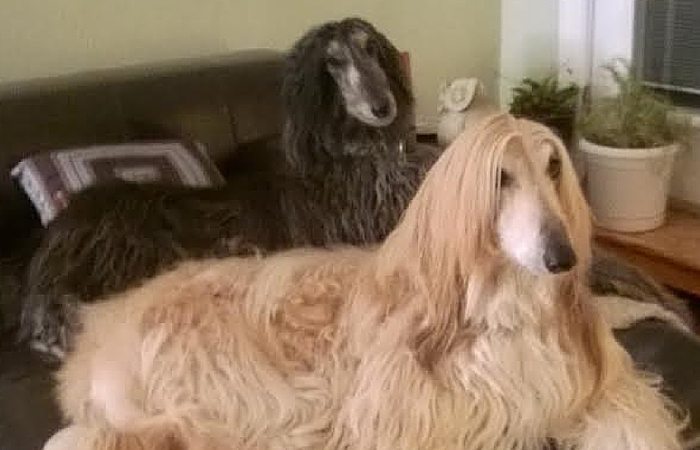
4. Know Your Breed
I have Afghan Hounds, which are independent, aloof, long distance hunters. They are VERY different than Labradors or Pugs, so what works for them might not work for other breeds or temperaments. For instance, sight hounds cannot be left off-leash or un-fenced without chasing something off into the distance, and they LOVE to sit at the window and watch squirrels. They aren’t the snuggly face-licking type of dog, and that’s ok!, but because they are perfect for seeing long distance to catch a snow leopard for their tribe’s supper, they do not focus well with close up action. Thus babies and children need to be protected and taught this – no waving chubby fingers in front of the muzzle! Other breeds or older dogs may be sensitive to sound or fast motion, or need lots of exercise. The American Kennel Club is a great resource for your breed or mix breeds heritage and like anything the new family member takes time to fit in.
5. Correcting Bad Behavior
Beware that if you ignore your dog, he will remind you that he is still there…and usually not in a pleasant way! Some dogs chew, some soil in the house, some become depressed or refuse food. When you first come home and forever after, greet the dog as you usually would (cookies, hugs, throwing a ball) and talk to them often. You can engage baby- what is Topaz doing?! Is Topaz the doggie eating?!- positive for both baby and dog. Topaz started recently stealing a soiled cloth diaper from the pail. Ruby started to piddle in the babies’ room-why at 9 months did this start?? Had we missed their evening cookie? Was the water bowl empty? A quick reflection revealed that now the boys were sleeping more during the night, there was less midnight attention and pee breaks they had become accustomed to. The remedy? After babies are tucked in, its time for doggie bedtime pee, pats, and cookies… along with keeping the baby room door closed. I would like to point out that ALL interactions with the dog pertaining to babies need to be positive- no matter how big the mess or how sleep deprived with one nerve left you are. Punishment will be associated with baby, and dogs will react defensively in the future when baby screams or raises arms. Just like raising babies to be behaved family members, dogs need guidance and positive reinforcement to be great companions for you little humans.
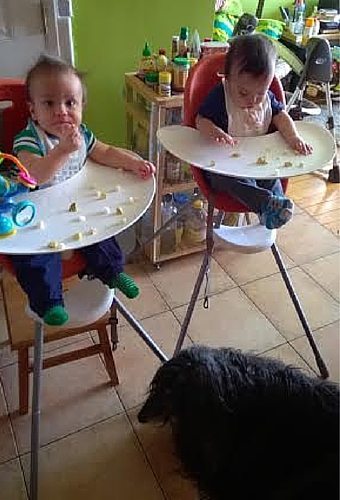
Eleven months in, our babies and dogs are complete clan members. They sleep alongside the cribs ‘on duty’ and wait anxiously by the high chair hoping for a giggle and a dropped morsel.

Josie Kramer Rodriguez is Midwestern born and raised. She is a full time nursing director in Boston with a master’s degree in nursing and an MBA in healthcare management. She is a full time wife to a soccer fanatic, and a full time mom of 14 month old twin boys, an adopted 8 year old girl from India, and 2 Afghan Hounds. She has owned, showed, bred and loved Afghans for 18+ years. Her free time is spent hosting women’s bible study, brushing dogs, volunteering at The Well Coffee House, and attending her baby-gang’s playgroups.

